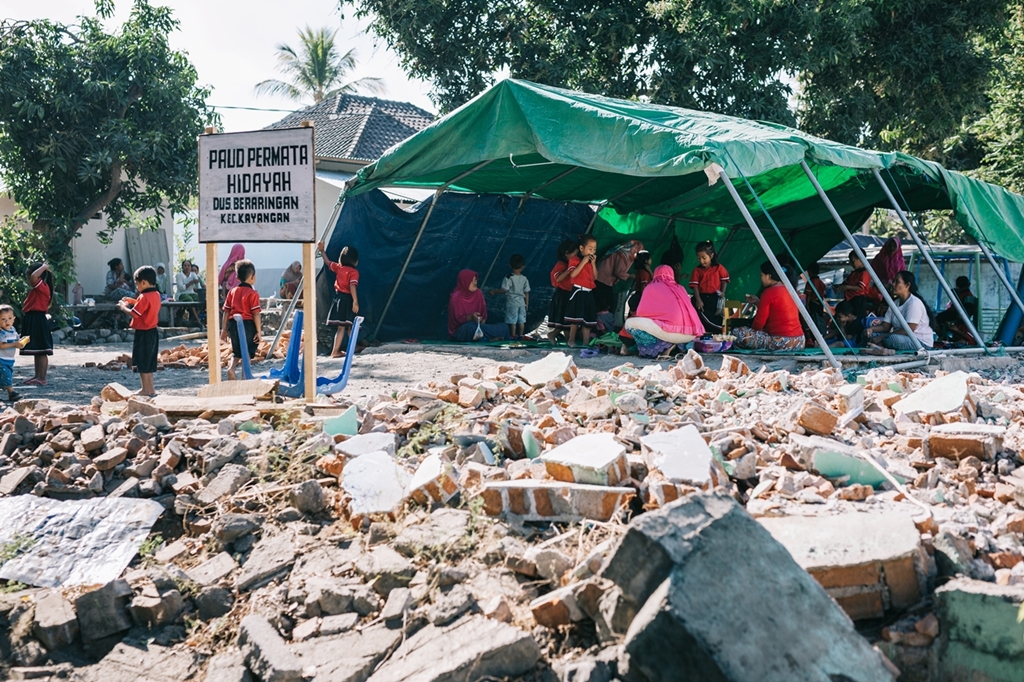In these projects, I focus on optimization, queueing theory, and algorithm design, which form the backbone of many advanced AI techniques. These foundational approaches, including queueing systems and greedy algorithms, play a crucial role in optimizing decision-making processes, resource allocation, and efficiency. As AI evolves, these algorithms continue to underpin advancements in areas like machine learning, deep learning, and generative AI, forming a critical bridge between classical theory and modern AI-driven solutions.
Queuing Systems

Post-earthquake housing community recovery monitoring is very important, especially since the housing sector usually represents 50 percent of the total monetary disaster loss. However, the very scarce recovery data, in addition to the complexities of the recovery process make modeling housing community recovery very difficult. Furthermore, most recovery models are only applicable to developed countries such as the US. In this project, I develop a novel stochastic queuing model that accounts for the total number of damaged buildings, the damage distribution, resource constraints and reconstruction prioritization strategies. The model was applied to seven regions that were affected by the 2018 Lombok earthquakes. which destroyed over 226,000 houses.
The journal paper for this project is published in the journal Earthquake Spectra, and can be found here.
This article also received the honorable mention for the EERI 2021 Graduate Student Paper Award. See the announcement here.
Greedy Algorithms

Natural hazards, such as earthquakes, can disrupt the healthcare system heavily, leading to long wait times and many untreated patients for years after the event. Emergency services, in particular, must return to pre-earthquake functionality as soon as possible such that patients, especially critically injured ones, can be treated promptly. However, reconstruction of healthcare facilities, and thus the complete restoration of emergency services, can take years. Due to limited reconstruction resources, decision-makers cannot reconstruct all hospitals simultaneously. They are typically forced to prioritize the reconstruction order, and in reality, this process is often poorly planned. This paper models emergency services as an M/M/s queuing system that accounts for prioritized treatment of critical patients and formulates a greedy algorithm to plan for an effective healthcare system reconstruction. The algorithm finds the reconstruction ordering of hospital buildings such that emergency patients have the shortest time to receiving medical care possible. We show our greedy algorithm’s good performance for small problem instances, with average deviations from the optimal solution below 16%. Further, we apply our methodology to a case study of Lima, Peru, under a hypothetical M8.0 earthquake. The application demonstrates that a policy guided by our formulation performs better than policies typically implemented by decision-makers, reducing the number of untreated patients by more than a factor of three in a worst case scenario with 70% hospital capacity disruption. Finally, we demonstrate that our formulation can be integrated into risk analysis through
The code for this project can be found here.
The journal paper for this project is published in the journal Risk Analysis, and can be found here.
Resource Optimization

In the aftermath of natural disasters, the school system is one of the many sectors that can be severely impacted. As a result of damaged schools, students are usually forced to transfer to neighboring schools, resulting in a decline in learning conditions and affecting the psychological well-being of the students. In this paper, we take an optimization approach to determining how to reconstruct schools as soon as possible to improve student well-being. In particular, limited reconstruction crews mean that schools must be reconstructed in sequence, and we study the order in which schools should be reconstructed to minimize the time and distance students travel to neighboring schools. We first show that it is computationally difficult (NP-hard) to find the optimal order. We then propose a simple greedy policy for determining the order of reconstruction and prove that this policy achieves close to the optimal objective in a simple setting with one construction crew. Finally, we empirically evaluate our greedy policy in a case study using data after the 2018 Lombok earthquakes and an expanded model with multiple construction crews, school capacity constraints, and temporary schools. In the case study, our algorithm performs significantly better than policies typically considered by policymakers. Our results demonstrate how theoretically motivated policies can be useful for post-disaster decision making.
The journal paper for this project is published in the journal Reliability Engineering & System Safety, and can be found here.
The code for this project can be found here.